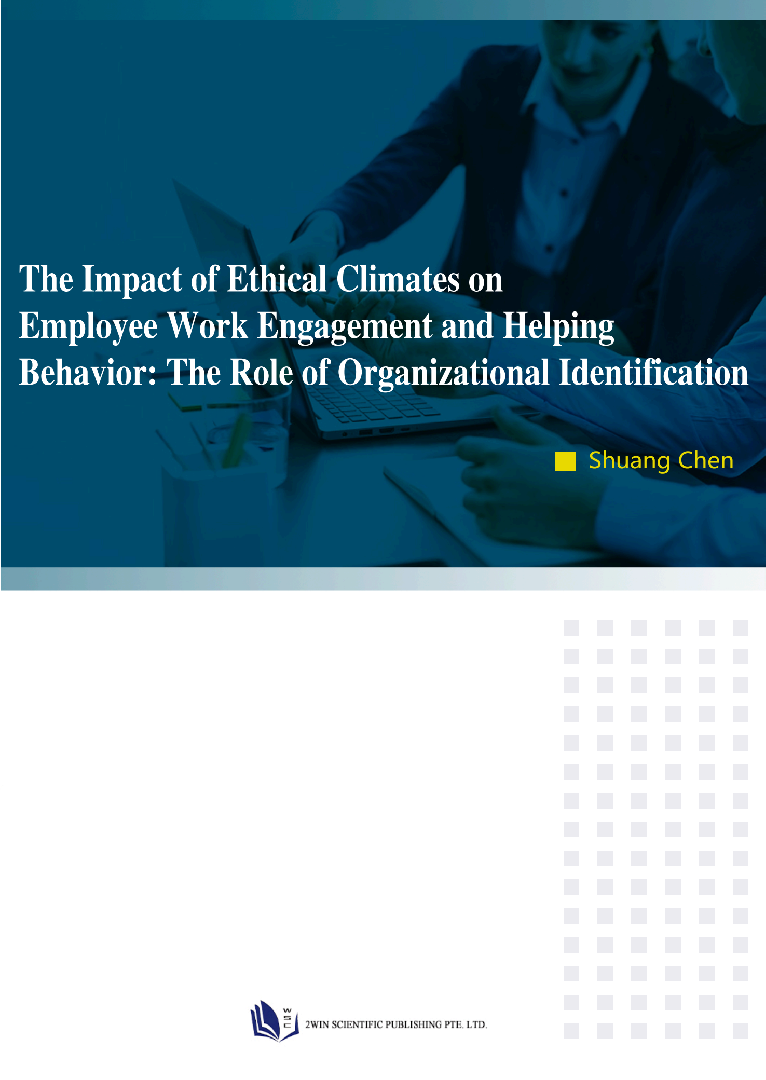

The impact of ethical climates on employee work engagement and helping behavior: the role of organizational identification
ISBN:978-981-17189-0-8
作者:Shuang Chen
语言:英文
发表年份:2022 年 08 月
收录数据库:新加坡图书馆
陈爽,出生于1983年03月26日,籍贯为辽宁。博士研究生学历,讲师职称。毕业于澳门科技大学,现任职于韶关学院。主要研究方向为组织行为、人力资源管理。
Chapter 1 Introduction............................................................................ 1
1.1 Background .............................................................................................................. 1
1.2 Significance of the study .......................................................................................... 5
1.3 Purpose of the study ................................................................................................ 8
1.4 Research design and methodology .......................................................................... 9
1.5 Summary................................................................................................................ 12
Chapter 2 Review of the Literature........................................................ 14
2.1 Ethical climates ...................................................................................................... 14
2.2 Organizational identification .................................................................................. 34
2.3 Work engagement.................................................................................................. 51
2.4 Helping Behavior.................................................................................................... 62
Chapter 3 Hypothesis and Research Model............................................ 68
3.1 The influence of ethical climates............................................................................ 68
3.2 Organizational identification as a mediator............................................................ 79
3.3 The role of job demand.......................................................................................... 90
3.4 Control variables.................................................................................................... 94
Chapter 4 Methods............................................................................... 97
4.1 Research design and procedure ............................................................................. 97
4.2 Survey instrument.................................................................................................. 98
4.3 Participants .......................................................................................................... 105
4.4 Statistical analyses................................................................................................ 106
Chapter 5 Results................................................................................ 109
5.1 Descriptive statistics............................................................................................. 109
5.2 T-test .................................................................................................................... 111
5.3 Study 1: The direct effect of ethical climates to work engagement and helping
behavior.............................................................................................................. 115
5.4 Study 2: The mediate role of organizational identification................................... 119
5.5 Study 3: The moderate role of job demand.......................................................... 124
5.6 Summary.............................................................................................................. 128
Chapter 6 Discussion........................................................................... 131
6.1 Theoretical contributions..................................................................................... 131
6.2 Practical Implications ........................................................................................... 135
6.3 Limitations............................................................................................................ 143
6.4 Suggestions for future research ........................................................................... 144
References.......................................................................................... 149
Appendix............................................................................................ 196
Part one ..................................................................................................................... 196
Part two ..................................................................................................................... 198